Our chosen home Munich is worth a visit for many reasons. You can experience one of them walking through a quarter where Ricarda and me lived for years. Schwabing – formerly a bohemian and now a sought-after residential area. It has a special feature that is often overlooked by its inhabitants: the many impressive buildings from a time when the district was an important centre of a short and crazy art movement – Art Nouveau.
Table of Contents
Art Nouveau in Schwabing – Crazy people on river banks
“Art Nouveau” is the German name of the art era “Art Nouveau” at the turn of the 19th and 20th centuries. The name comes from the magazine “Jugend – Münchner Illustrierte Wochenschrift für Kunst und Leben” (Youth – Munich Illustrated weekly for art and living), founded in 1896. The protagonists and supporters of this art movement caused some turmoil among the more conservative Munich citizens through true and also through invented stories. Rumors of crazy youngsters wrapping themselves in shawls and dancing in the Meadows along the river Isar count among the more harmless (true) stories. These “madmen” left us, amongst other things, beautiful peaces of architecture. We would like to recommend a small route through Schwabing, where you will get to know some of our favorite buildings. This walk takes about 40 minutes.

Münchner Freiheit – The tour begins
Start at the subway station “Münchner Freiheit”, take the exit “A – Clemensstraße”. Once at the top, you are standing directly in front of a magnificent work by Art Nouveau architect Martin Dülfer (Leopoldstraße 77), in which he himself lived. The colorful floral ornaments and asymmetrical parts of the building are typical Art Nouveau elements. It is also typical of Art Nouveau that these elements were not always used, because the architects did not like their work to be “typical” under any circumstances. The first part of the way leads in the direction of the city centre/Odeonsplatz. Leopoldstraße itself offers hardly any other Art Nouveau highlights worth mentioning. The attraction here is rather “see and be seen”, for locals and guests alike. After a few hundred metres we turn right into Kaiserstraße.
Ainmillerstraße – Something might look familiar to you here
Between two seemingly out of place, but beautiful brick façade buildings in the Neo-Renaissance style, there is a pleasing Art Nouveau facade (Kaiserstrasse 14), which shows the principle of asymmetry in General. On the one hand it’s an attempt to turn away from historicist architecture, on the other hand it is a turn to forms and design principles, which should be based on nature. The short further way through Kaiserstrasse and Wilhelmstrasse is Art Nouveau-free, but our next destination has jaw-dropping examples of it. A few hundred metres after turning right into Ainmillerstraße you will reach house number 20, one of the more striking buildings of this style in Schwabing. Here we especially like the entrance and the playful details of the roof area. A few steps further on and you will stand in front of one of the most beautiful and most photographed Art Nouveau houses in Munich (Ainmillerstraße 22). You might have seen its blue-golden decorations and the ancient Egyptian-looking heads on the window arches on a picture before. We particularly like the figures above the wooden entrance door – Adam and Eve shortly before the Fall.
When you’ve seen enough of it, go a little further, past house number 33, with its shell-decorated entrance and 40, where remarkably hardly any window resembles the other, to Römerstraße. By the way: Wassily Kandinsky and Paul Klee lived in this part of Ainmillerstraße for several years.
Römerstrasse – Egyptian meets Greek
You would have noticed yourself that you should turn right in the Römerstraße, because the first thing that will catch your eye is the impressive building with its red columnar ornaments: golden decorated faces of the pharaohs, a representation of the narcissus and the roof windows embedded in a peacock ornament. Right next to it, house number 15 offers another colorful highlight of our tour. The two buildings are so beautiful that it’s easy to overlook the diagonally opposite examples that are not so spectacular and also not so well known. Follow the Römerstrasse in the opposite direction until the end. By the way, here, every building has some art nouveau elements.
Franz-Joseph-Strasse – Snakes and peacocks
Turn left into Franz-Joseph-Strasse. The first building on the left side is often not perceived as an Art Nouveau building. But it is a particularly beautiful example. Perhaps it is, because the architect has skipped colorful decorations. But these – very unusual ones – are offered by house number 23: for example patterned columns and blue balconies at an otherwise monochrome house with a roof gable worth to be seen. A few houses further on (Franz-Joseph-Straße 19), the glass door with a green-purple metal frame is the first thing you will notice. When you look through it, you not only get an impression of the entrance area, but also, through the counterpart of the glass door, a small view of the enchanted garden in the inner courtyard. The façade and balconies of this gem are decorated with snake and peacock motifs in green and gold. The latter are the reason why the building is called “the peacock house”. You shouldn’t miss to stand directly under the balconies and take a look upwards. Then walk a few meters in the direction you came from and turn left into Friedrichstrasse.
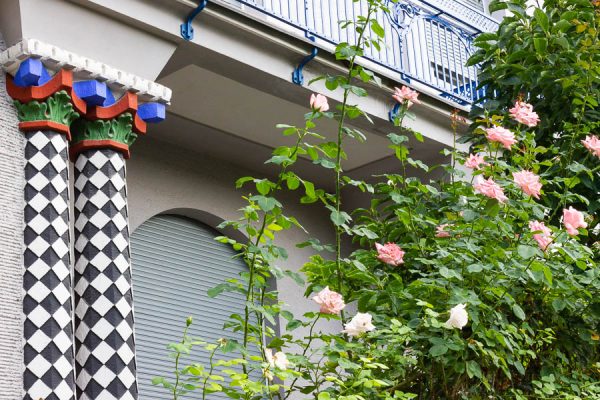
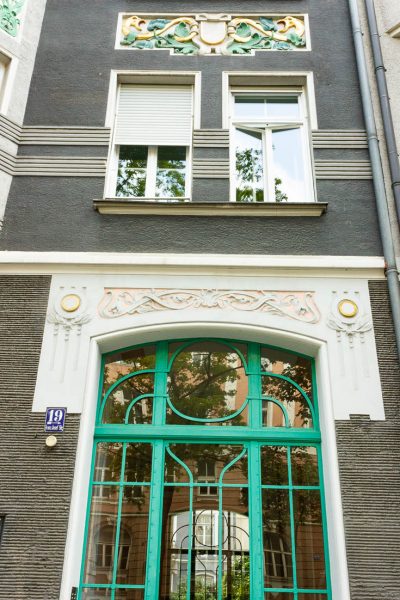
Along Leopoldpark to Georgenstrasse
At first glance, the stately house in Friedrichstraße 18 does not look like Art Nouveau, but it can be clearly attributed to it. The architect Max Langheinrich leaned somewhat on the Baroque style without really imitating it. This was not unusual in Art Nouveau. They just did whatever they liked and didn’t want to follow any conventions. That would also have been unthinkable. The imitation of historical architectural trends – historicism – was exactly what the Art Nouveau master builders turned against. Our way leads along the Leopoldpark, which is largely unknown to most of Munich’ s visitors, although it runs parallel to one of the city’ s most popular boulevards, Leopoldstraße. With its dense treetops, the park invites you to linger for a few minutes on hot days and, for example, to reflect on the impressions you have gained. Although there are some not so attractive buildings of the recent past along the Friedrichstrasse, there is still some Art Nouveau to be seen on the way to our last stop. Just keep your eyes open and look upwards.
Georgenstrasse 10 – No Art Nouveau?
Very soon, after turning left into Georgenstrasse, you will reach number 10, the Palais Bissing (Bissing Palace). This building was first built in the neo-Renaissance style and then radically rebuilt in the so-called reform style. Reform architecture, like Art Nouveau that was emerging at about the same time, turned against historicism, but adhered to traditional building materials and construction methods. Many Reform Style buildings show Art Nouveau influences. This cannot be denied here either, at least Ricarda and myself think so. But we are by no means architecture experts. Anyway – we didn’t want to keep back the colourful and worth seeing facade of this gem from you as you end the tour.
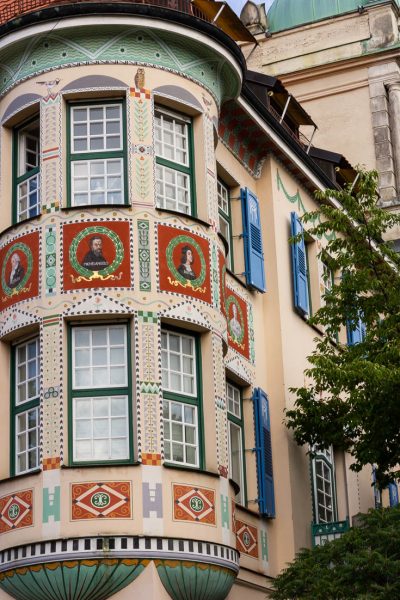
From Art Nouveau back to contemporary Schwabing
If you follow Georgenstrasse to the end and then turn left, you will soon reach the metro station “Giselastraße” on Leopoldstrasse. From there you take the metro to the next station Münchener Freiheit, the starting point of our little tour. Passing the Palais Bissing on the left, a short way leads to the already mentioned Leopoldpark. From there you can also reach the metro station easily. Maybe you want to walk the few hundred meters back to Münchner Freiheit and find a nice café to sit outside when the weather is nice. After all, Schwabing is also known for that. For more individual cafés, we recommend the side streets.
More travel inspiration from Hiddentraces
If you like the blog post about Art Nouveau in Schwabing, you might also be interested in the articles about the Latvian capital Riga and its brilliant Art Nouveau architecture as well as the article about the idyllic Munich district Altperlach, where we now live.
Transparency: The naming of destinations is based on our voluntary decision.
If you would like to receive regular updates on my articles and activities, then sign up for them (at the top right of your computer, below the article on your smartphone).
Pin the article on Pinterest to remember or recommend it!

Text: Christian Hollweg
Fotos: Ricarda C. Hollweg
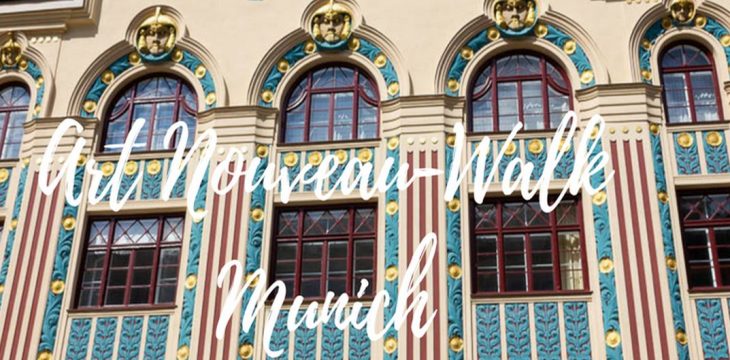
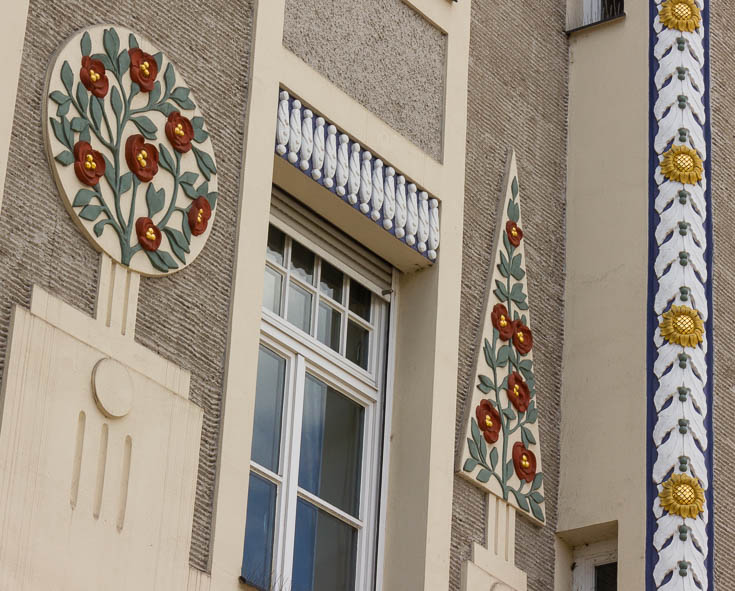
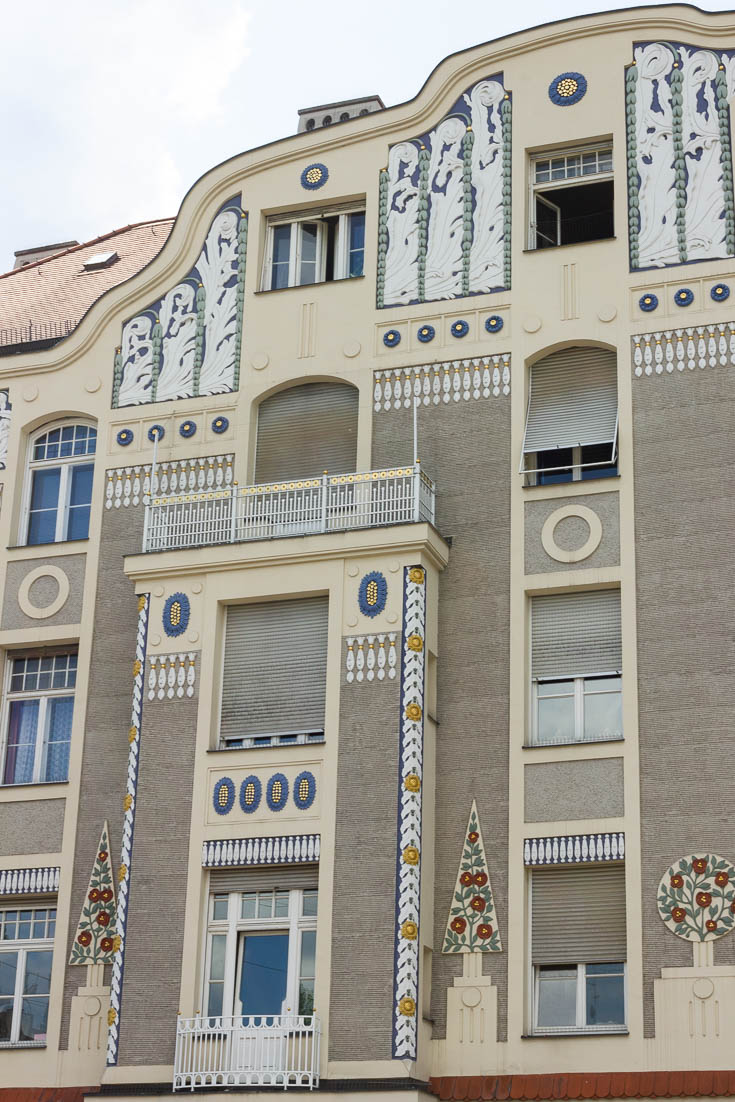
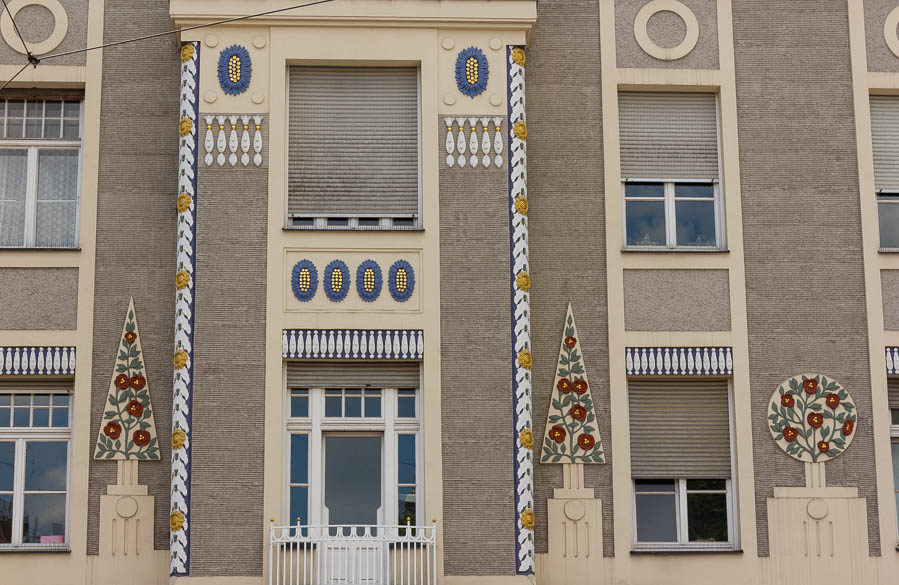

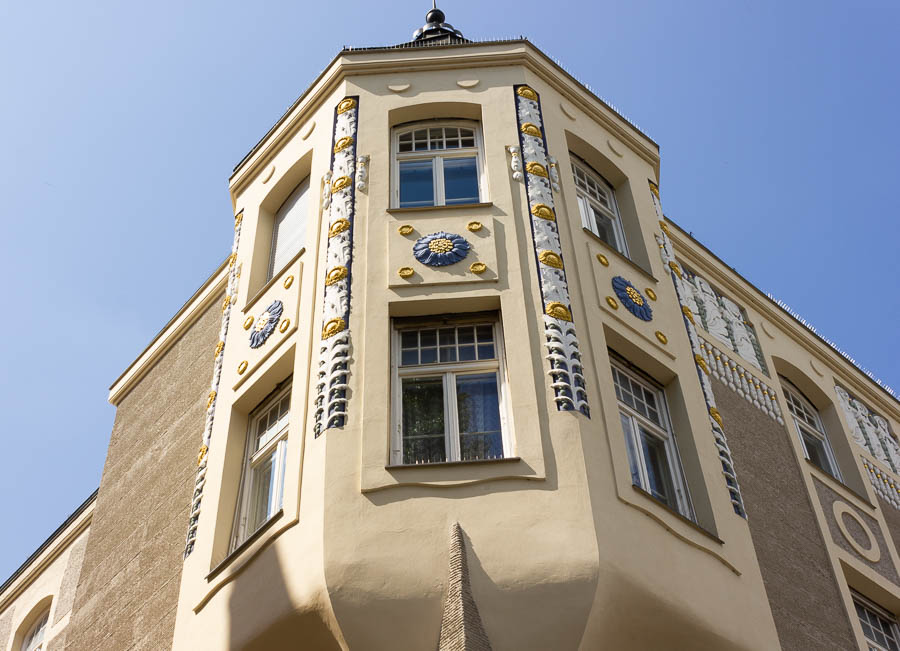
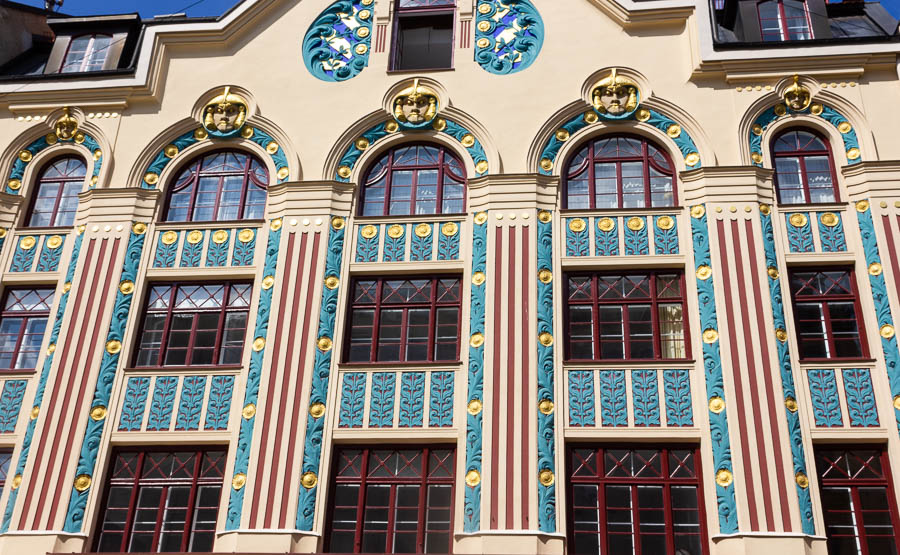

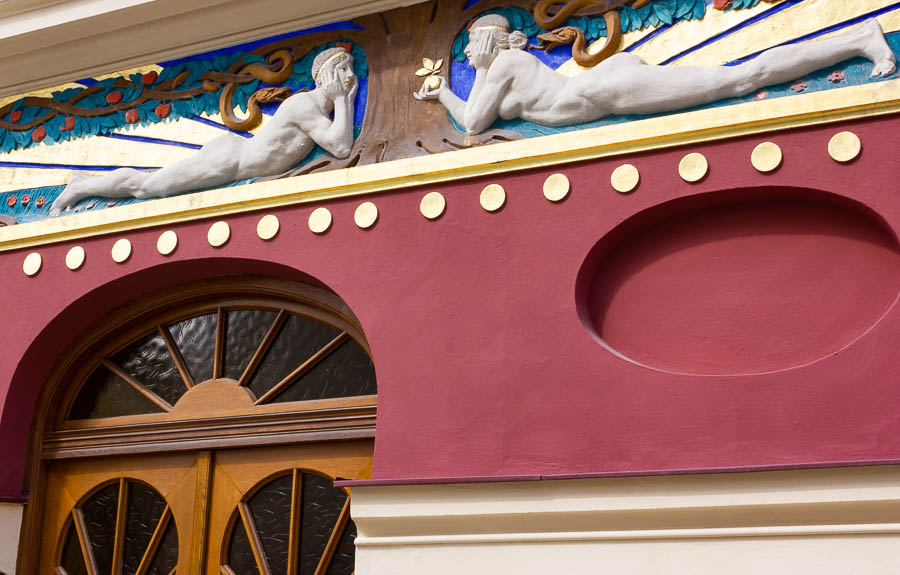
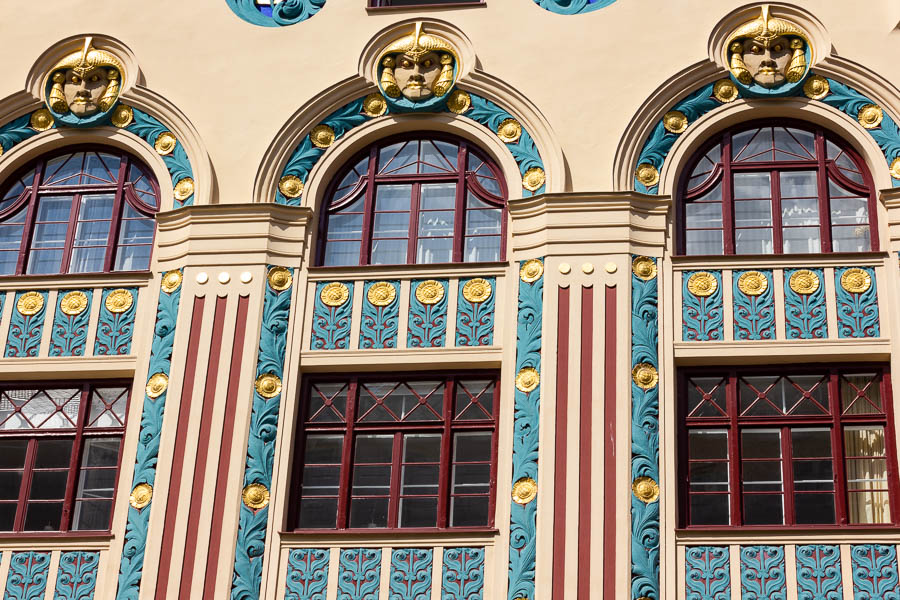
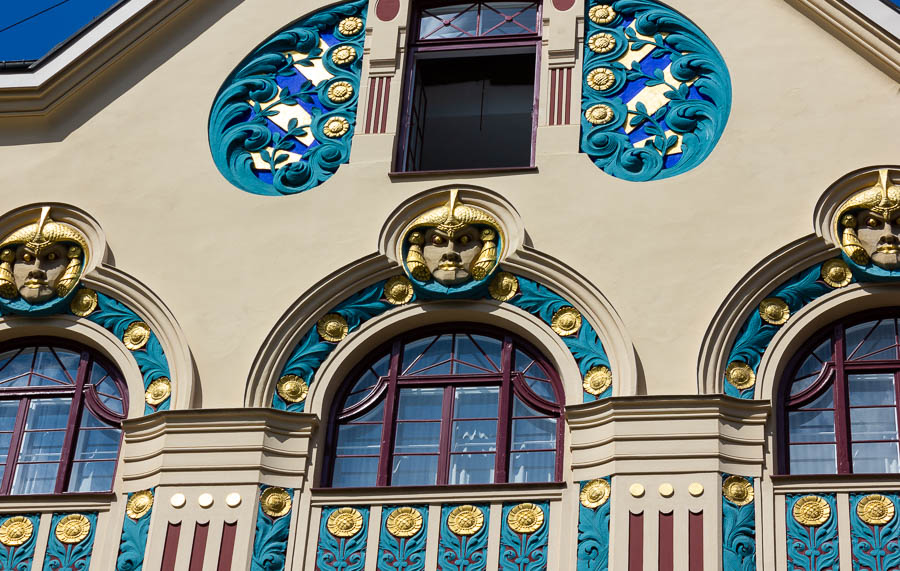


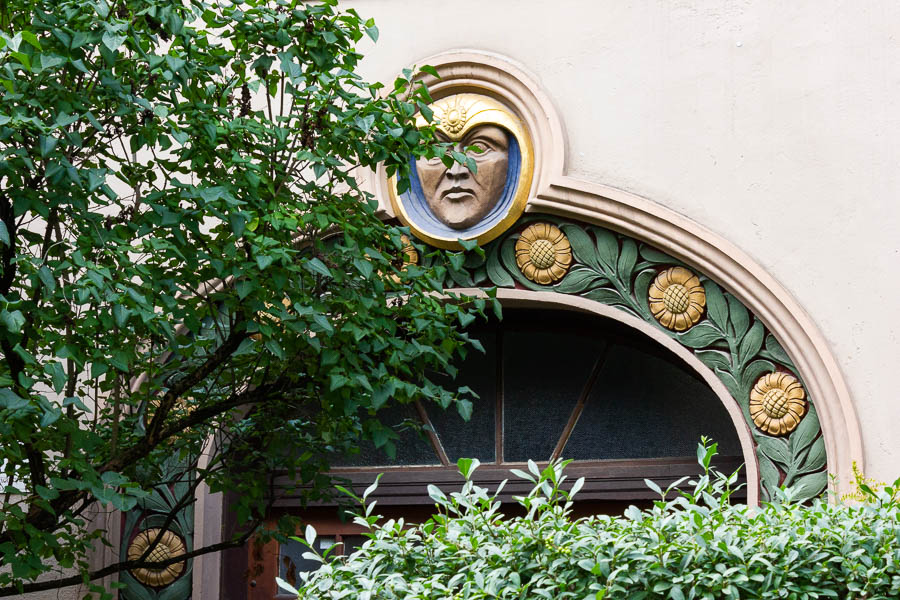
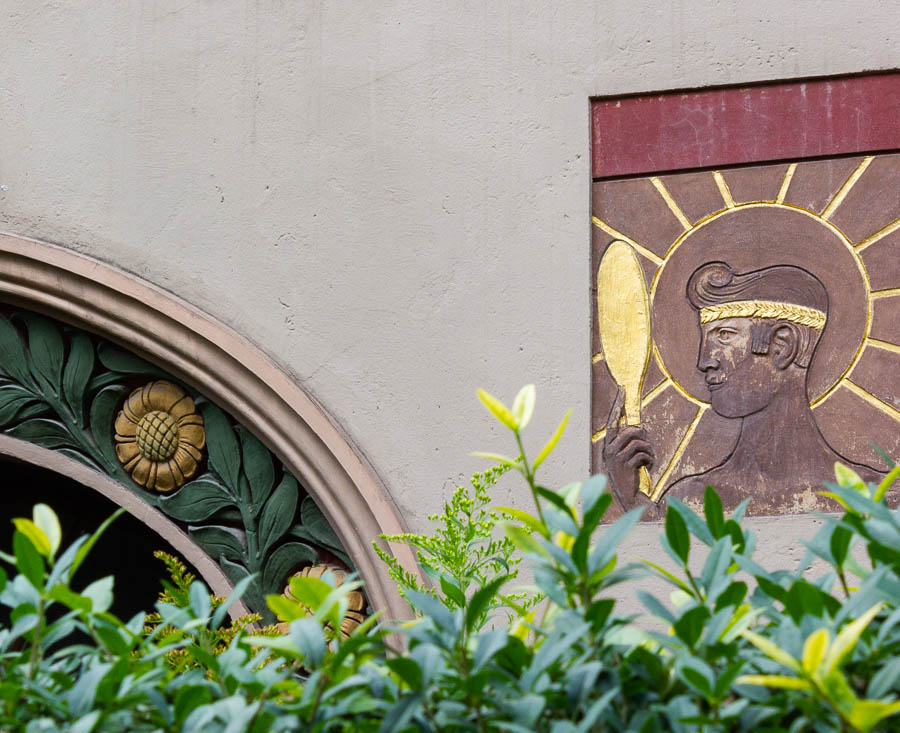
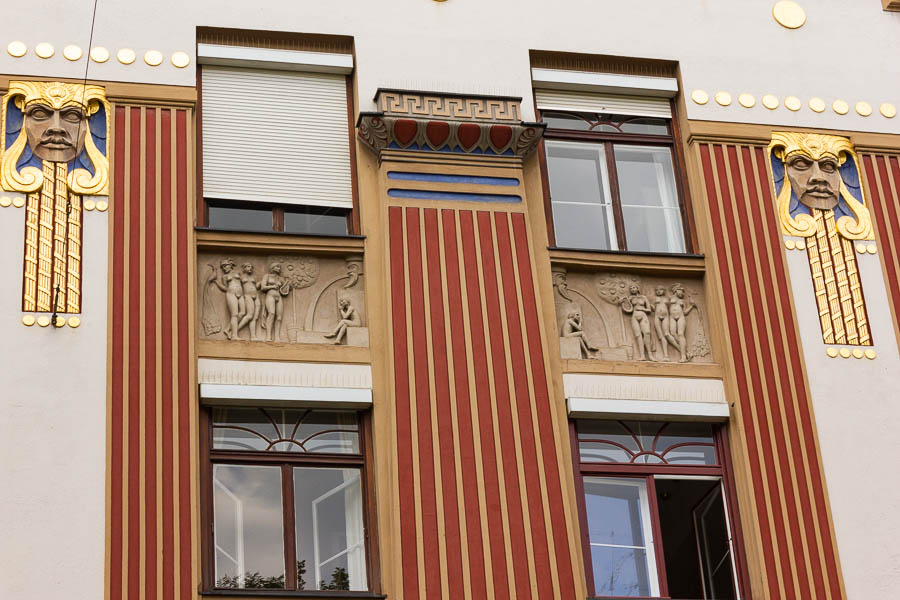
What a glorious selection of buildings, makes me want to head back to Munich!
Thank you so much, Catherine. Apart from the main tourist attractions Munich has a lot of great places to discover. I was born here and still find new places of interest. Happy you liked my post.
I took your tour today — in the snow! What a delight it was to turn each corner and discover these fantastical buildings! Thank you so much for putting this together! I have been to Riga and Subotica and adore an Art Nouveau tour. You didn’t disappoint!
Hi Keri,
Thank you so much for your lovely feedback! I am happy you enjoyed our tour. I did not know about Subotica. Will read about it. Thank you for mentioning.
Best regards,
Ricarda